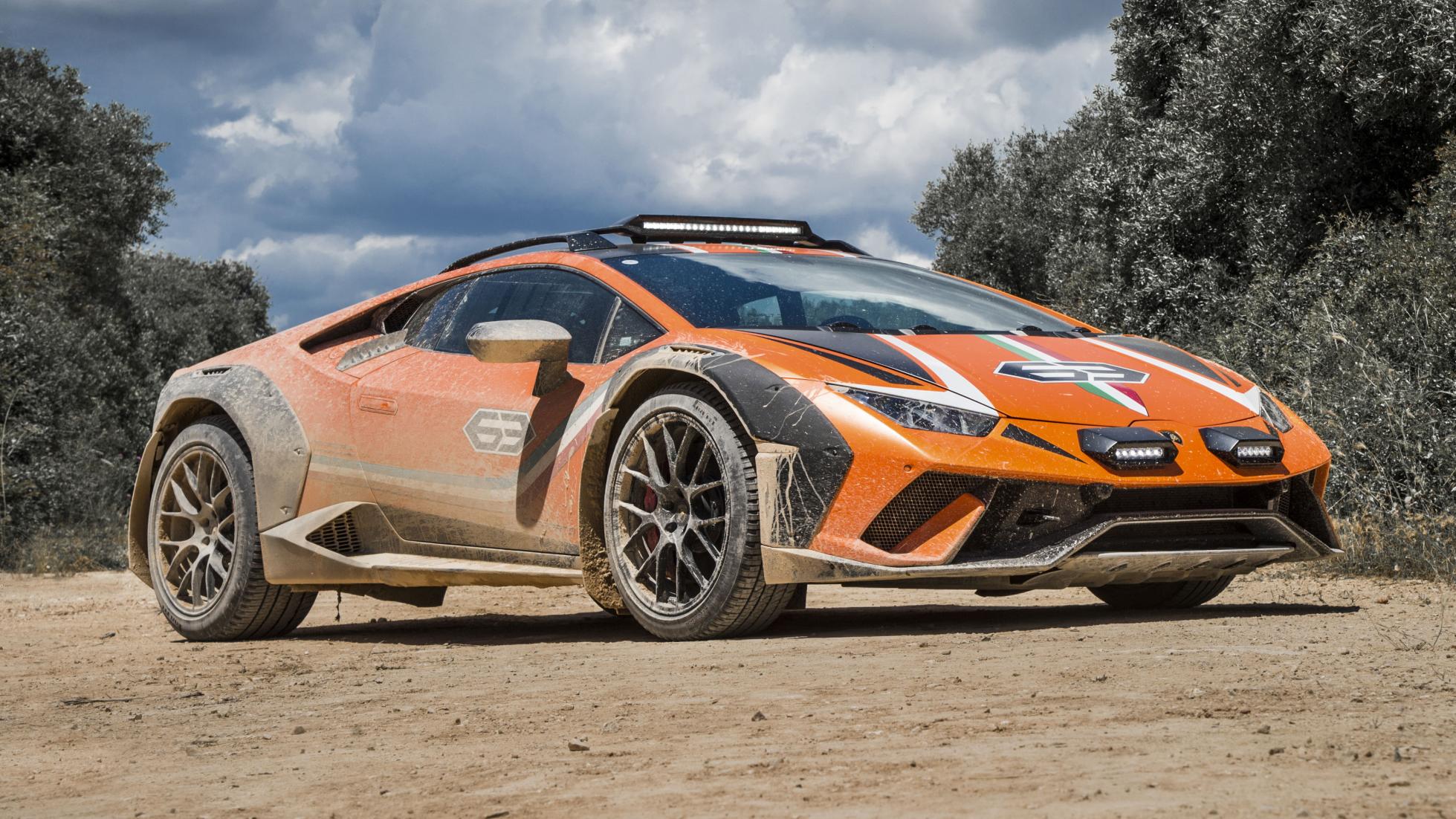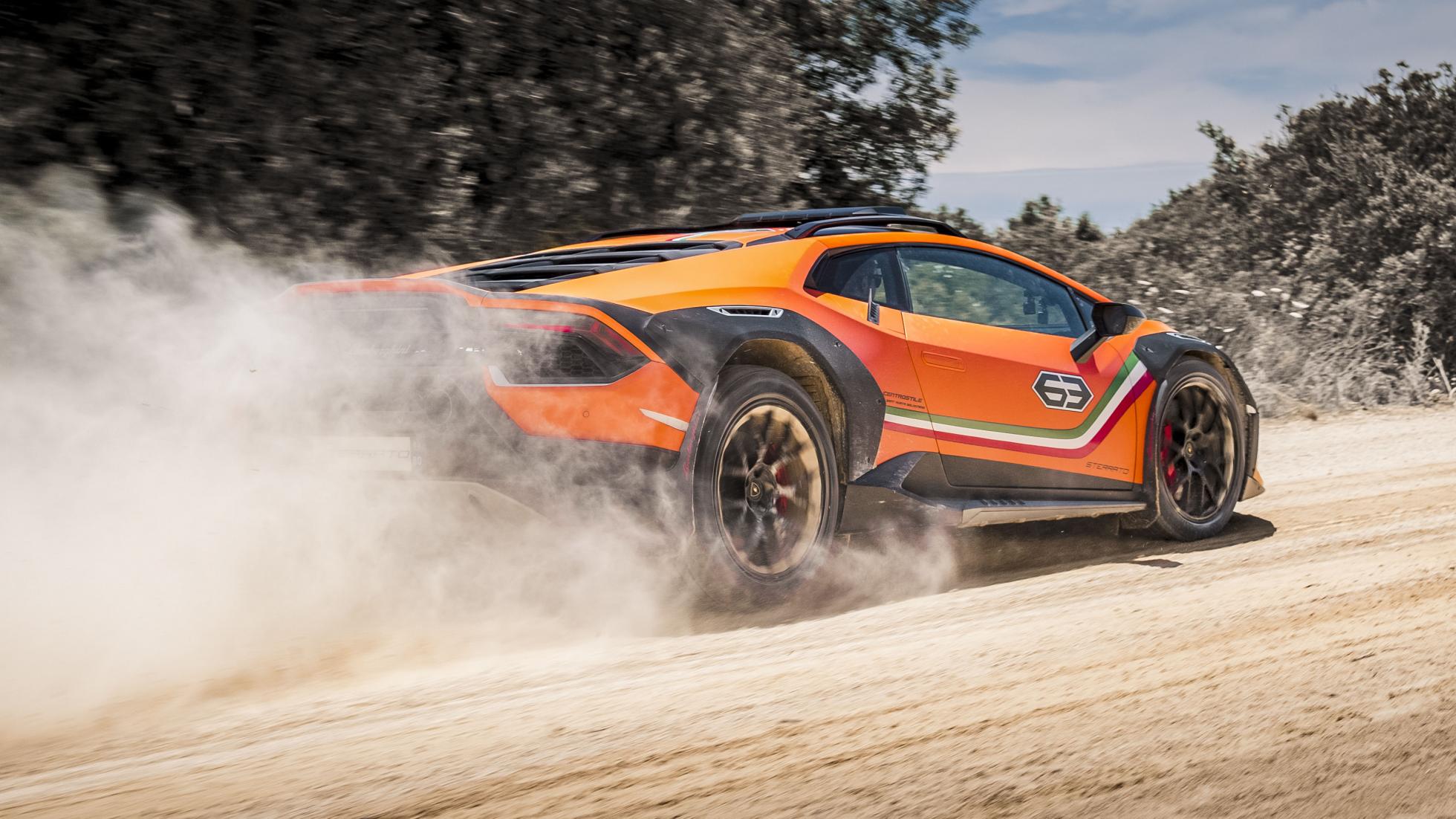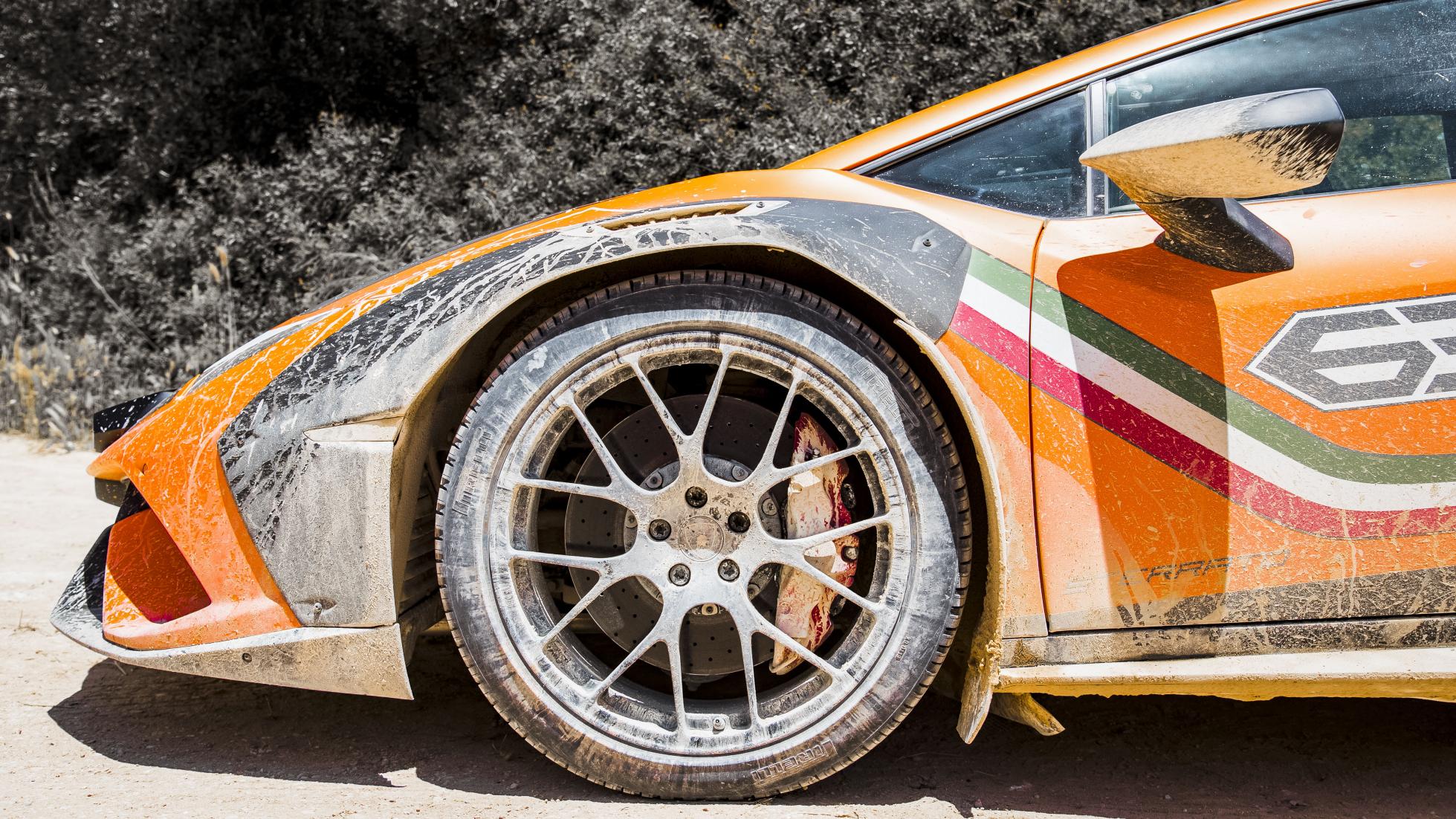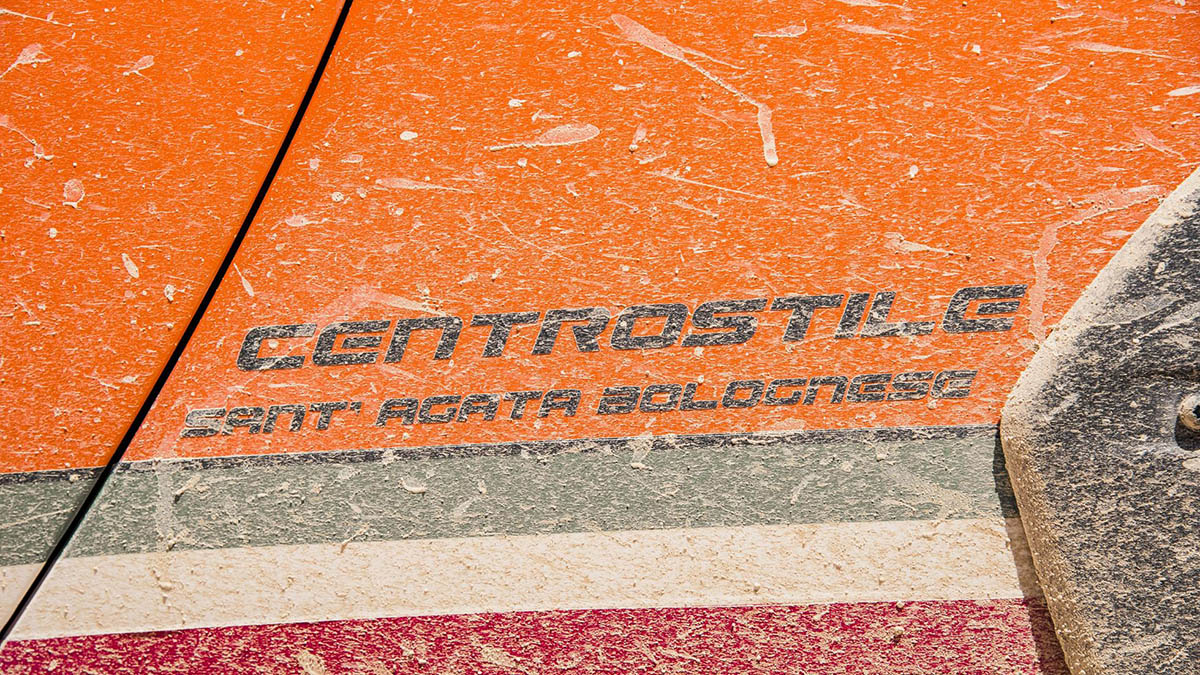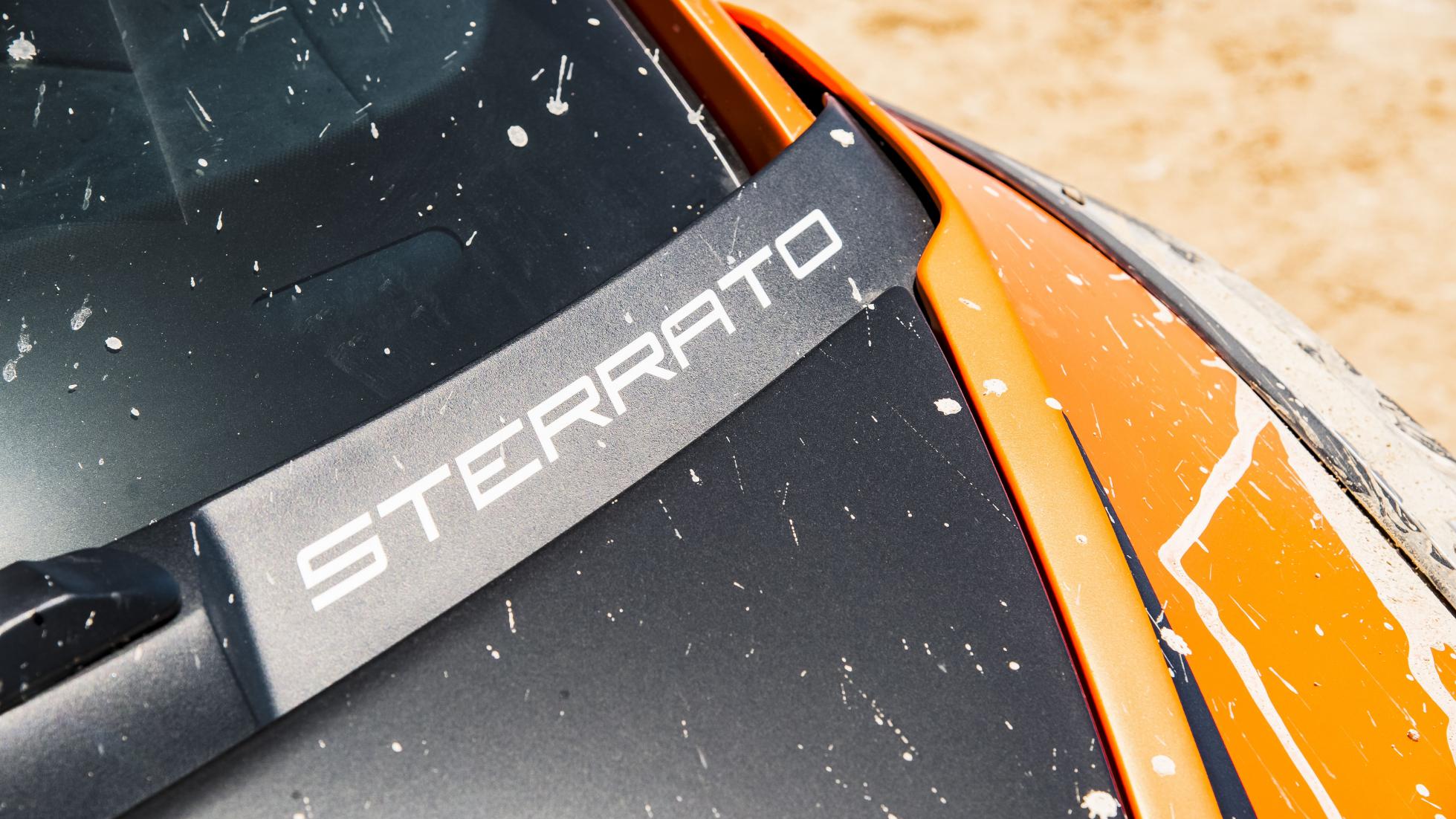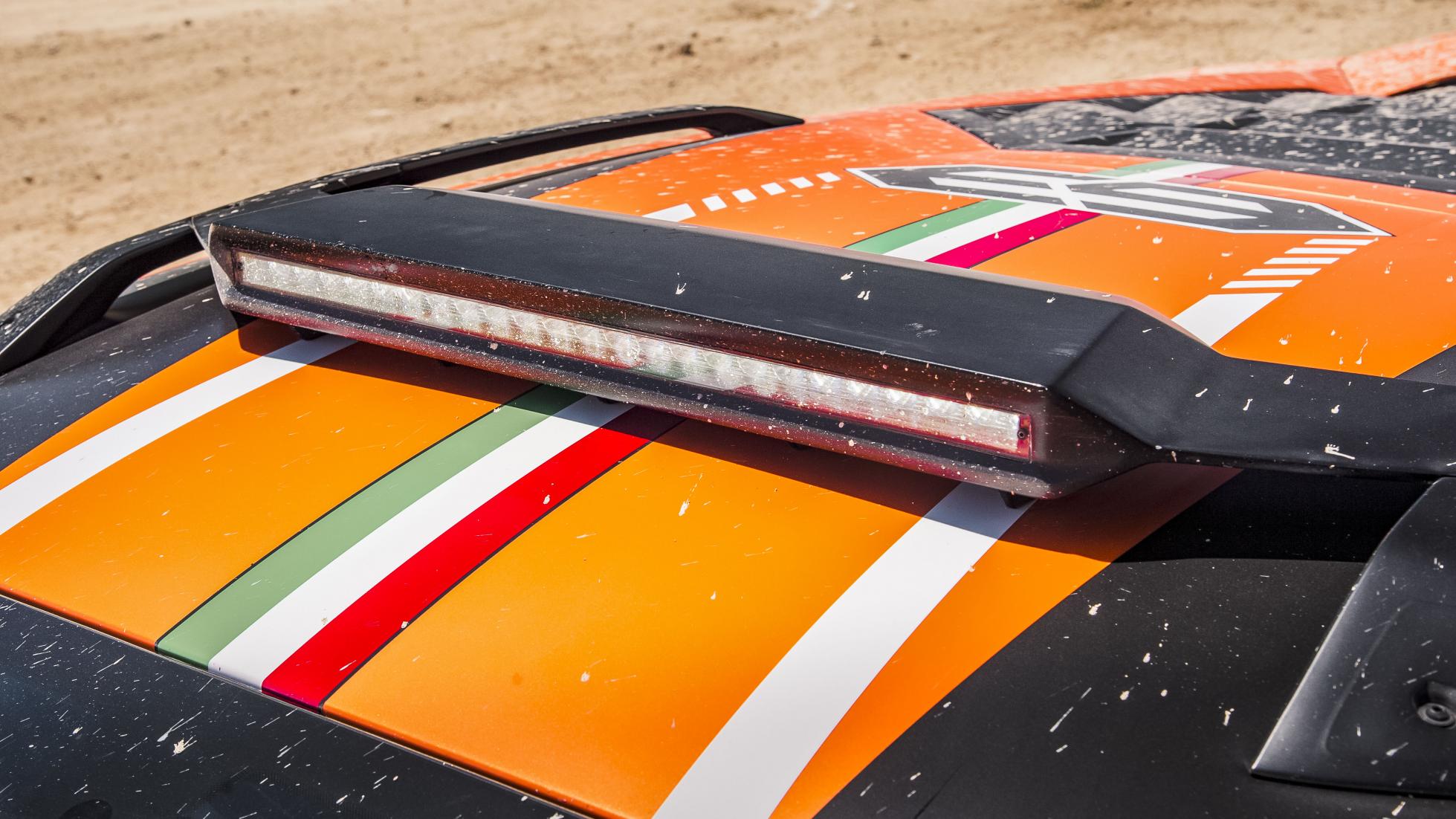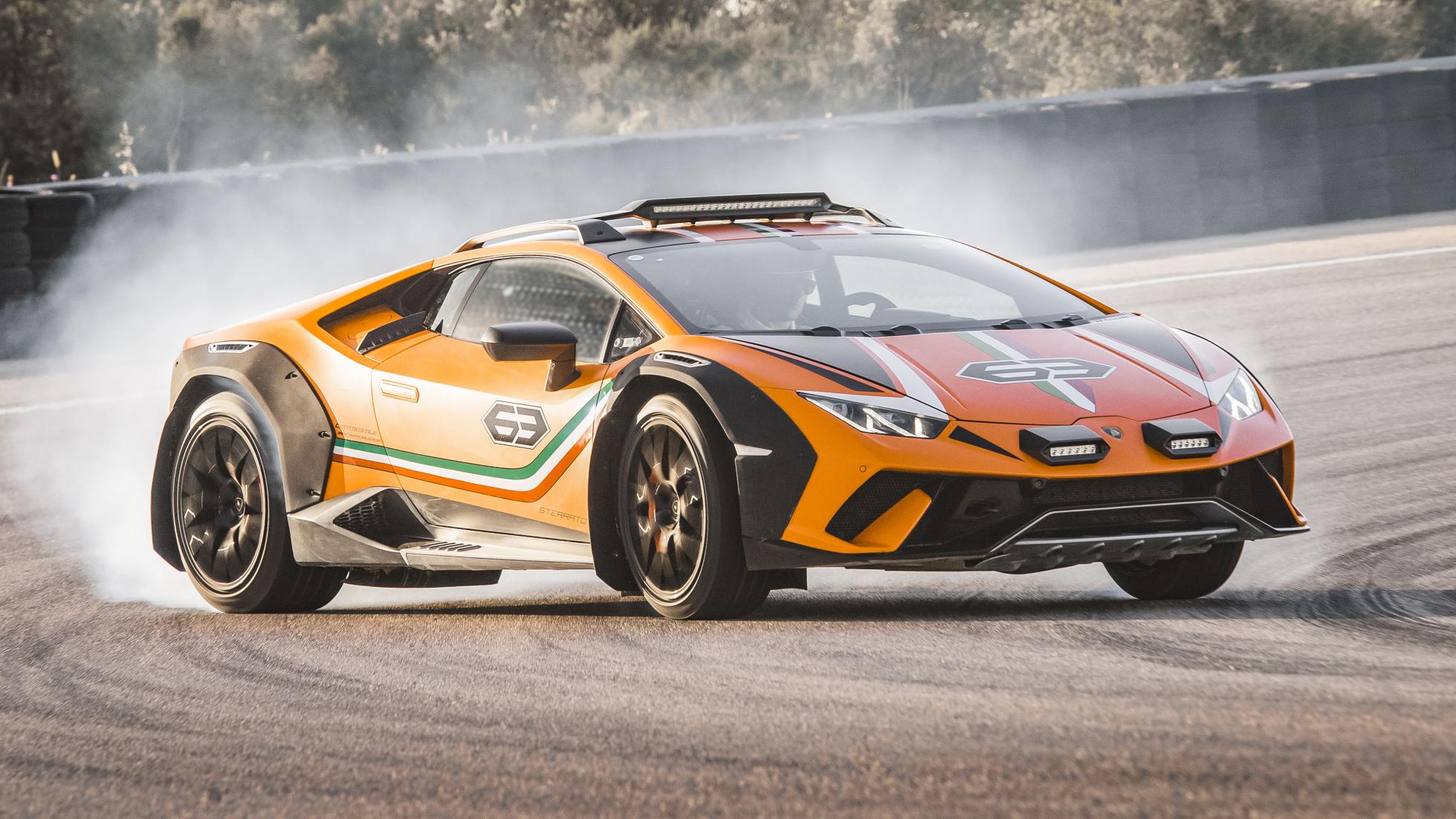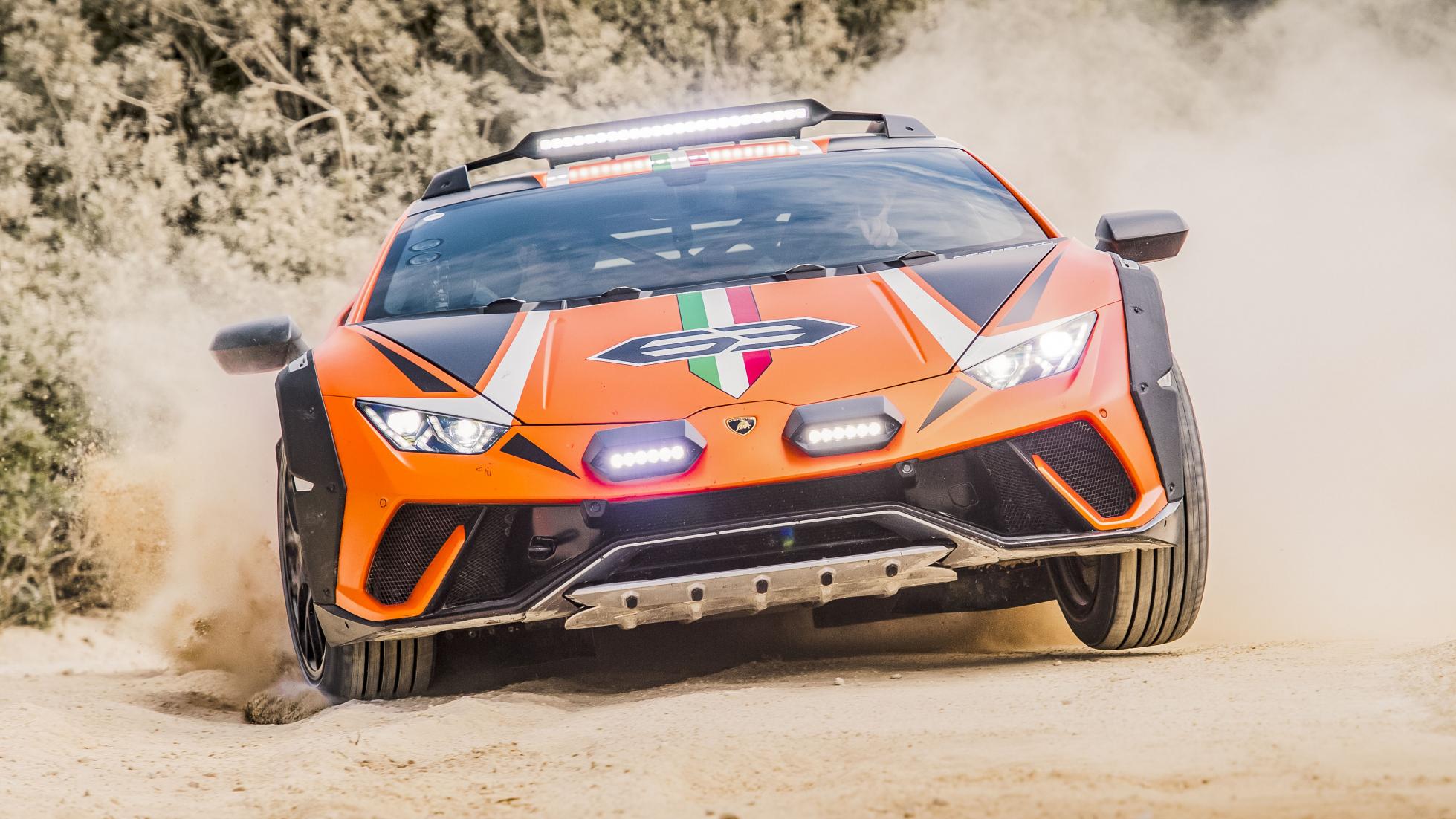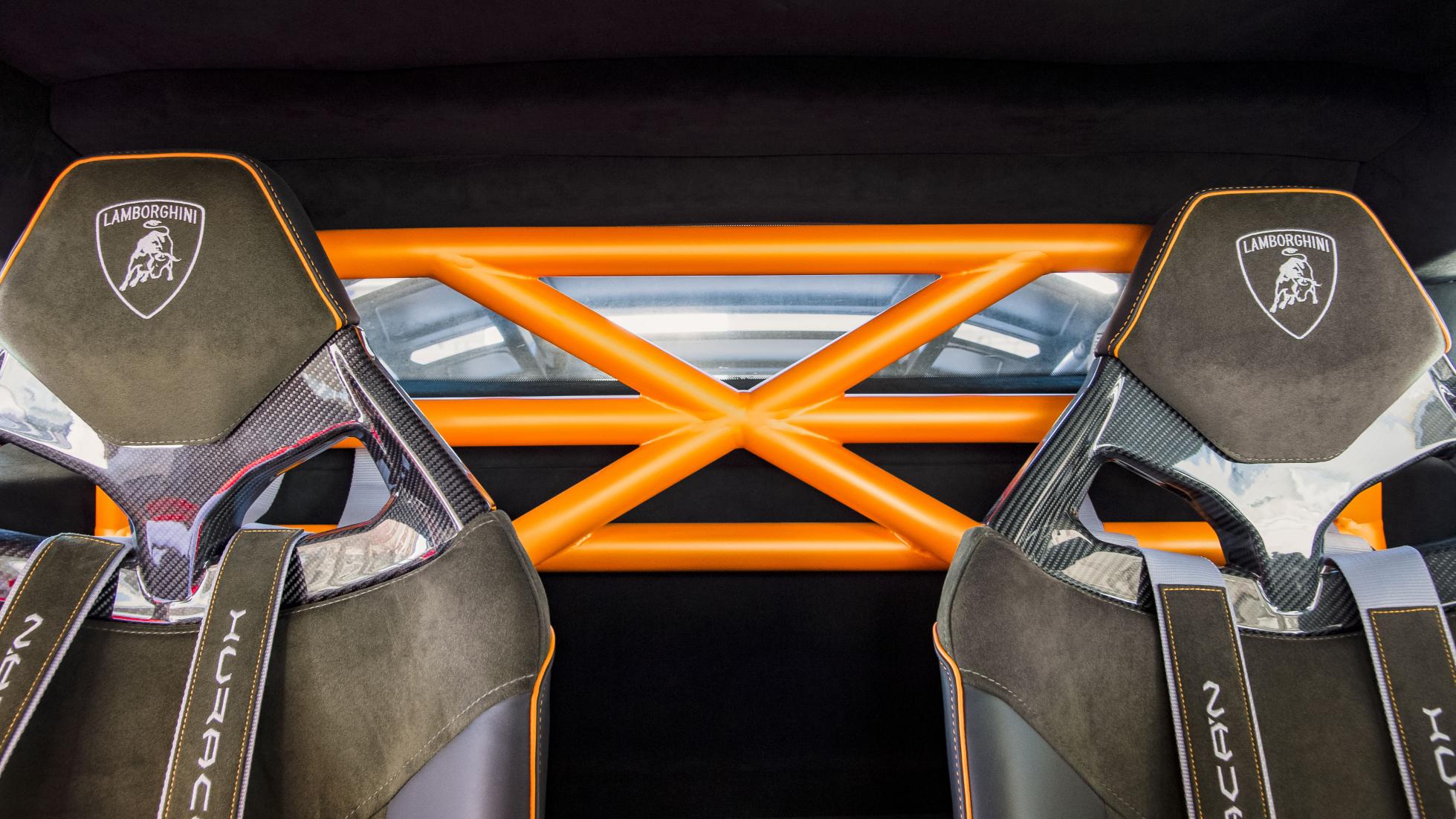Lamborghini Huracán Sterrato review: wild, off-road Lambo tested
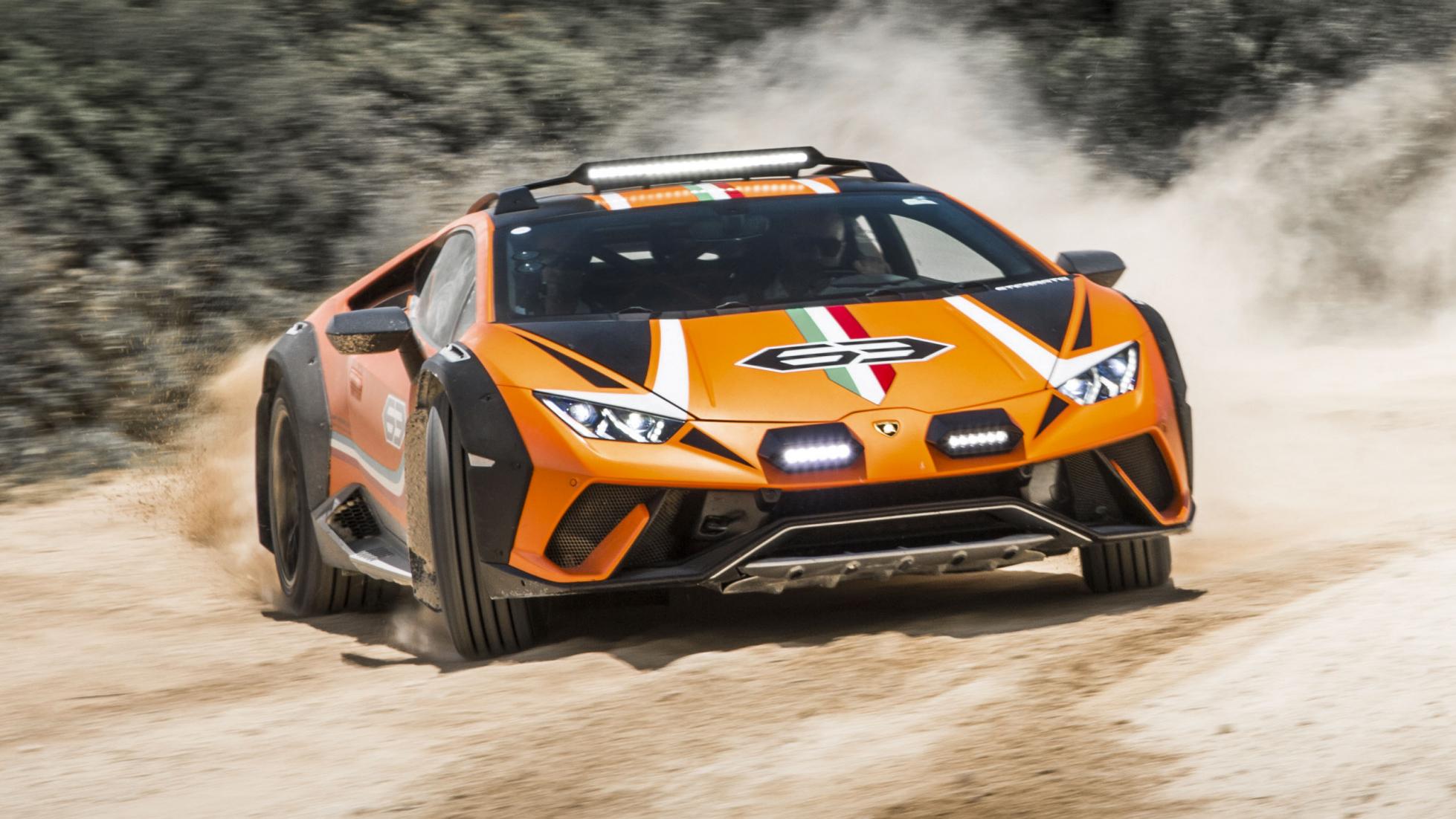
The gun-slit-narrow rear view frames a huge Lamborghini-manufactured explosion of road detritus. The accompanying noise is a combination of dust, stones and rocks being thrown up by all four driven wheels and their impact in, around and under the car, and it is brutally violent. The road hits a rise which we crest and the car goes light, we touch down and I jump on the brakes, turn in and the car starts to rotate. I get back on the throttle and aim in one long sideways spray of dust, noise and V10 brilliance around the long left-hand turn in third gear.
While for most supercars this would be the wincingly embarrassing paragraph describing the moment when it all went wrong, when I ran out of talent and ended up talking to our insurers… this is what the Lamborghini Sterrato was made for. So, rather than my co-pilot bracing for impact, he continues to offer encouragement: “This is nice. Gas, gas, gas.” As my laps of the Strada Bianca rally stage continue, I learn to ignore the noise and enjoy the experience.
Let’s rewind a bit… I’ve been invited to Nardò – the top-secret test facility located at the bottom of Italy – by Lamborghini’s head of R&D, Maurizio Reggiani, to test drive this skunkworks project: the Huracán Sterrato. While there’s no direct translation of ‘sterrato’ in English, the best approximation is ‘dirt’. Yes, this is the Lamborghini Huracán Dirt. Like all the best projects, this one has been developed by a highly enthusiastic team in their own time, alongside other projects. While on first acquaintance your reaction may be that they must have spent too much time in the sun, dig a little deeper and these guys could well be on to something. Just look at it. If, like me, you grew up on a diet of Tamiya and Kyosho catalogues and building/racing/jumping RC cars around your neighbourhood, the Sterrato is the full-size realisation of those days.
The day starts with a technical briefing, which tries to insert the Sterrato into a logical planogram of Huracán models. Admirable, but I’m not sure it needs to fit into the model matrix. In a world all too often stymied by analysis and user clinics, it’s refreshing that Lamborghini still has the passion to create something it thinks people will simply like. Something fun. Something cheeky. If we’re honest, Lambo is the only carmaker provocative enough to develop a project like this and show it, just to see how its audience reacts.
The technical recipe for the Sterrato is as follows. Take one Huracán Evo with naturally aspirated 5.2-litre V10 delivering 631bhp to the all-wheel-drive, rear-wheel-steering drivetrain.
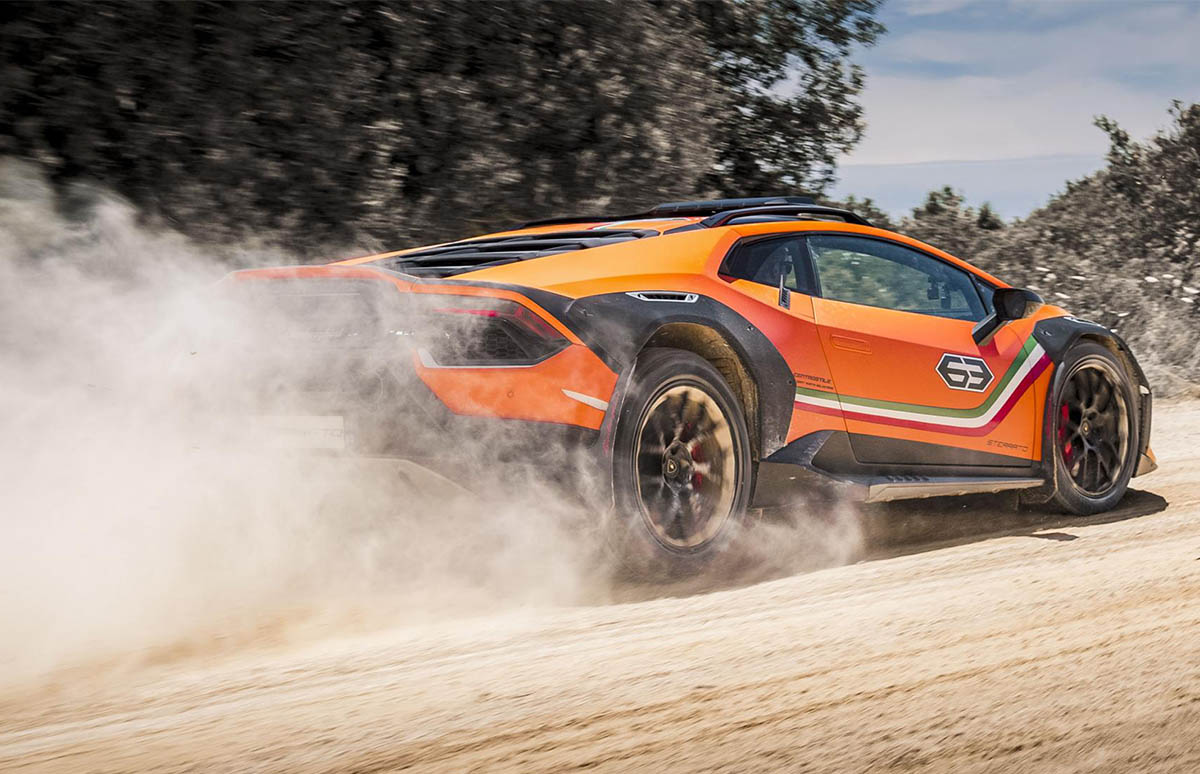
Next, raise the ride height by 47mm (handily improving ground clearance, plus approach and departure angles) and retune the standard dampers. Increase the track by 30mm. Leave the wheel size the same at 20in, but fit special high-profile balloon tyres developed with Pirelli to work on-road and off. Move the front axle 30mm forward by redesigning the suspension geometry, ensuring the wheels clear the arches on compression, and revise the front wings to accommodate the 30mm shift. Add a new steel front splitter, cladding around the wheelarches and side sills, and a reinforced undertray. To help the engine breathe and prevent the V10 from swallowing much dust, add aero flicks in front of the air intakes and fit a revised air filter. Finally, add roof rails, a light bar and two front spotlights (anyone else think it should be a five-light cluster?) and you have a Huracán Sterrato. Inside, it’s familiar Huracán, but a titanium rollcage, new adjustable sports seats (comfy), four-point harnesses (fiddly) and aluminium flooring differentiate it from the ‘regular’ car.
Presentation finished, Nardò health and safety briefing done (which seems to consist mostly of warning us not to feed the animals), it’s time to find out what the Sterrato feels like on the 3.8-mile tarmac handling track.
The short answer is: comfy, rear-biased and amusing to drift. The more detailed analysis is that, thanks to the Sterrato’s increased ride height and tyre sidewalls, the car pitches and squats on braking and acceleration, which is unnerving at first and feels slightly foreign in a modern Lambo. But the R&D team has spent a lot of time modifying the Lamborghini Dinamica Veicolo Integrata (LDVI) system to make the Sterrato more rear-biased. After a couple of laps, you begin to enjoy this new supple Lamborghini, turning in on the brakes to get the car sliding, and then powering out on oversteer. It’s clearly not going to threaten the regular Evo’s lap times, but its accessibility and the enjoyment you get from a completely different kind of Lambo experience is addictive. Moreover, it’s far less compromised on track than you would have thought looking at it sat in the pitlane.
Track work done, we move to the Strada Bianca, a ribbon of white road made up of sand, dust, rocks and VERY SOLID BANKS. This is where the Sterrato comes alive. Initially, my onboard computer can’t process the fact I’m flat-out in third, occasionally grabbing fourth and drifting a supercar around a rally stage. To be honest, it feels wrong to me, and I spend my time waiting for the chassis-compromising crunch as the car grounds on landing, or the glow of the warning lights as the Italian diva waves the white flag… but they never come. The Sterrato takes or, rather, revels in the abuse.
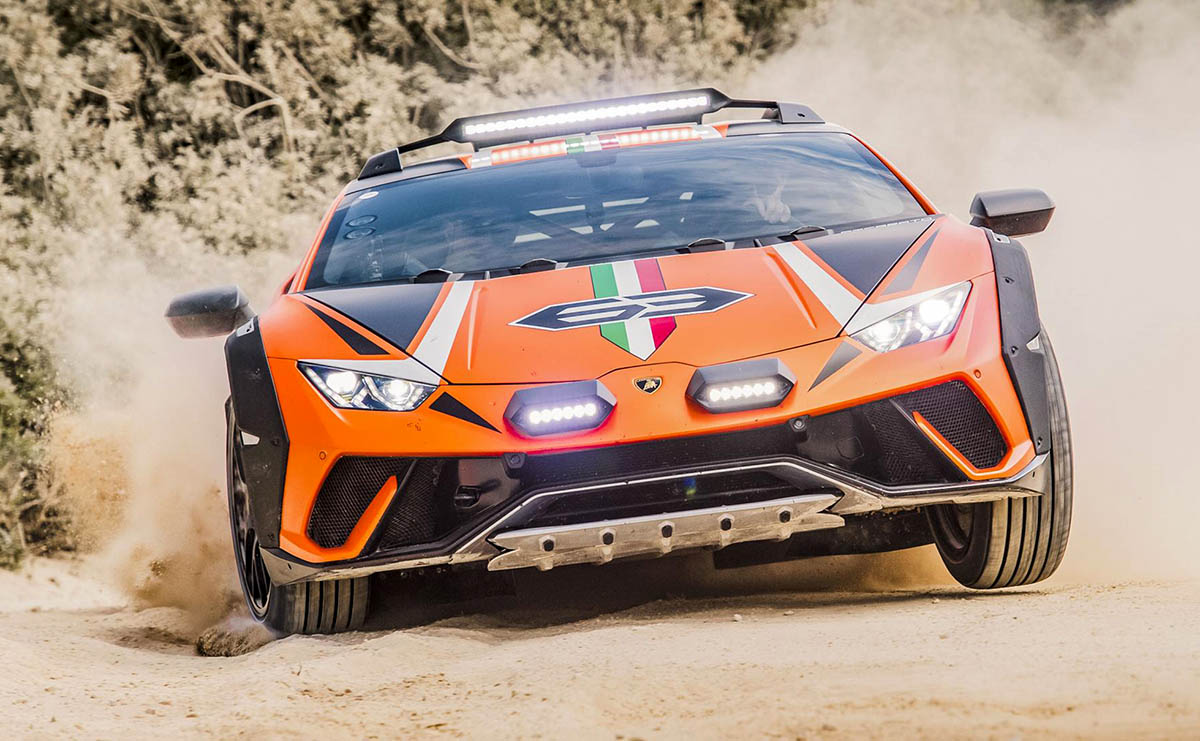
It genuinely feels like you’re the latest star of Police, Camera, Action! who has stolen someone’s supercar and are desperately trying to flee the scene cross-country. But once you get past the noise and remember the Sterrato was designed to do this, it proves hugely capable and, without question, the most fun I have had in a supercar.
In Corsa mode, the LDVI system has been revised to lengthen the transition into oversteer, making it flattering and easier to drift on broken and unpredictable surfaces. At the end of my second stint, I get out expecting there to be some damage to the car, such is the pounding the surface was giving it, and so horrendous were the noises of stones battering it, but, while covered in dirt, it sits happily idling with not a mark on it.
Dirty supercars, supercars that show they have been used, have long been something we admire at Top Gear. As the Sterrato ticks cool, covered in an extreme layer of, er, ‘sterrato’, it looks fabulous. It’s done enough during my time with it to make me sincerely hope it makes the move from skunkworks R&D special to production car.
In a world where the supercar spectrum is driven by the pursuit of thousandths of a second, it’s refreshing for Lambo to have the confidence to go in a different direction, and I genuinely think it could be onto something.
As the world’s roads continue to deteriorate at a frankly alarming rate, the chances of finding a road good enough to fully pull the pin on a supercar become a vanishing rarity. Emerging markets like China, Russia and India have hugely disparate road quality and vast tracts of routes only reachable by something off-road-capable. But why should a supercar, or, more accurately, the supercar experience, be restricted to roads? Too many of these incredible feats of engineering are bought and hardly ever used, the surface of their potential barely scratched. The Sterrato breaks the stereotype the supercar has backed itself into, and offers a broader capability and with it broader appeal.
Need to get to your Alpine retreat? Bolt the snowboard on the roof and head for the snow line. Bored with Sunday evening traffic back into LA? Why not take a diversion across the trails? Want a supercar that can survive the harshest environment of all: daily life in a megacity? The Sterrato has you covered.
What Lamborghini has created in the Sterrato is a diverse, enjoyable and usable supercar for the battleground of the world we find ourselves in today. A supercar that deserves to be let out of the skunkworks and let loose on our planet.
- Charlie Turner
